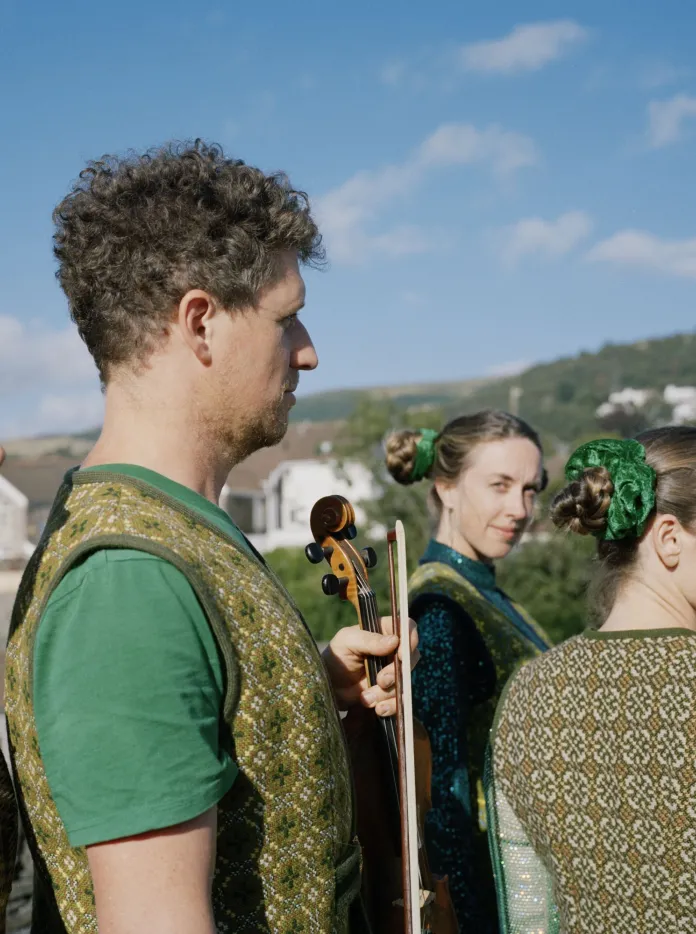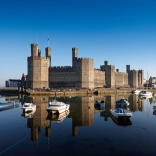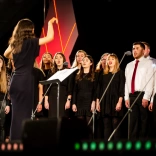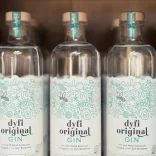Dance can solve all the world’s problems. Honestly, we believe passionately in that! It’s so important for us as a society to have the freedom to dance.
Yes, dance can be scary for some people. But you know that feeling you get when you’re dancing in the kitchen when nobody is watching? It’s even better when we dance together. It’s an amazing experience. It brings all kinds of benefits: community, health, well-being.
We’ve all got a body, right? And it doesn’t matter what that body looks like, or what it’s capable of. If we’re breathing, we can move.
Angharad Harrop, Cywaith Dawns / Dance CollectiveYou know that feeling when you’re dancing in the kitchen when nobody is watching? It’s even better when we dance together. It’s an amazing experience.
When we’re born, movement is our first language. We might go on to develop speech, but sometimes we don’t. We work with a lot of autistic people who are non-verbal. Movement is a way we can express our identity and culture. We can make connections, we can make friends - all through movement. Dance can say a lot without saying anything.
We want to make dance part of everybody’s lives. We run sessions for babies and their families, for people living with Parkinson’s, for people with additional needs and disabilities. We also do youth dance to get young people excited so there’ll be more dance artists in the future. We have a teacher developer program, looking at how we can add dance to the curriculum for Wales.
What’s going on in the picture? We’re doing a show for young children called Sblash! which combines Welsh folk dance, flamenco, clowning and performance with live music.
A lot of our work is about pushing the boundaries forward, while being really respectful to the tradition. There’s a wonderful quote, attributed to Mahler: ‘Tradition is not the worship of ashes, but the preservation of fire.’
That’s what we’re doing. How can we stay within the tradition so it doesn’t become something completely different? How can we honour that - but still find new ways to express it and make it relevant to our lives today? How do we continually reimagine it?

We want to embed folk dancing and clog dance into places where you wouldn’t normally expect to see it. So it’s not just something that people perform at the eisteddfod. Rather, it’s part of our society.
I inherited my mother’s dancing clogs. Well, it’s more like I stole them, actually. I found them in the bottom of the wardrobe. My mum and dad both used to clog dance, and I said, ‘Teach me how to do this, please.’
During my teens, dancing gave me all sorts of cool opportunities, and I realised that you could have a career in dance. I went away to study at university and carried on studying, teaching and working. Now I’ve got a PhD in dance, believe it or not.
My doctorate came out of a cultural exchange between artists in Wales and Brazil. Not everyone on the project spoke the same language, so we looked at ways in which we could put dance and music into a dialogue, to find a shared performance and shared presence.
I was back and fore to Brazil for months at a time, so my Portuguese is fluent now. It was sink or swim: speak Portuguese or don’t get fed! So I picked it up quite quickly.
More recently I did another intercultural project in the Basque country. I taught clog dance and learnt some of the traditional Basque dances. We performed at a huge festival there, and about 40 young Basque people came over to dance in Wales.
I learned some Spanish, and also a little bit of Basque. Or at least, I can count to eight in Basque. When you’re teaching young people to clog dance, that’s all you need to get going.



